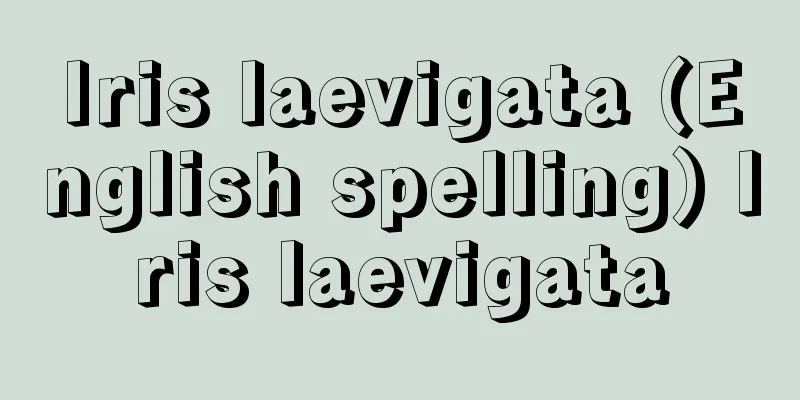Tapestry - Tapestry

|
Also called Tsuzure Nishiki, this is a type of woven fabric that uses two or more colors (sometimes as many as dozens of colors) for the weft threads, and the pattern is created by weaving only the patterned parts together. The weft threads do not run from selvedge to selvedge in the patterned parts, but instead meander like a zigzag, hence the name Tsuzure Nishiki. Generally, the warp threads are made of strong linen or cotton and stretched tightly, then dozens of different kinds of loosely twisted wool or silk (sometimes gold and silver threads are used) colored weft threads are passed through a small shuttle one section at a time according to a sketch, and the threads are pulled towards the front with the toe and lightly gathered with a sujitate (a comb-shaped weaving tool). The structure is a plain weave variation structure, but the weft threads are folded back at the color boundary and woven in a knitting-like manner, which creates gaps in the warp direction. These are called "hanging eyes." To fill these gaps, the two adjacent weft threads are intertwined to prevent them from forming. This weaving technique appears to have been acquired naturally in various regions. The oldest tapestry is said to be one bearing the royal emblem of Amenhotep II (reigned 1450-1425 BC) of the 18th Dynasty of Egypt, but tapestries from the same period have also been excavated in the coastal deserts of Peru, making the theory that tapestry originated in Western Asia questionable. Among the oldest tapestries are Coptic textiles and Peruvian pre-Inca textiles, while France's Gobelins and China's kokushi textiles are also well-known. In Japan, tapestry or its modified weave, shokusei, can be found in Shosoin textiles, the Taima Mandala at Taima Temple in Nara Prefecture, and the Kenda Kokushi Kesa at Toji Temple in Kyoto, but all of these are thought to have been imported from China, and were not domestically produced until the early modern period. In the first half of the 18th century, Hayashi Sehei of Nishijin, Kyoto, first wove this fabric, imitating the carved threads of the Ming and Qing dynasties, and in the 19th century, Mon'ya Jirobei wove a picture of one of Japan's Three Views of Mount Gion Urade. [Kadoyama Yukihiro] Part of a wall hanging. It was produced in Nishijin during the Meiji period, and the design shows the distinctive features of Tsuzure-ori. ©Shogakukan "> Tapestry Source: Shogakukan Encyclopedia Nipponica About Encyclopedia Nipponica Information | Legend |
|
綴錦(つづれにしき)ともいい、緯(よこ)糸に二色以上(数十色に及ぶものがある)の色糸を使い、模様部分だけ織り綴(つづ)るようにして模様を表した織物。緯糸は模様部分では織耳から織耳まで通っておらず、つづら折りのように蛇行して織り進められるので、綴織の名称がつけられたのであろう。 一般に、経(たて)糸にはじょうぶな麻または木綿を使い強く張ったのち、下絵に従って数十種の甘撚(あまよ)りにした羊毛あるいは絹(ときには金銀糸を使う)の色緯糸を一部分ずつ小さな杼(ひ)で通しながら、つまさきで手前にかき寄せ、筋立(すじたて)(櫛(くし)状の織詰め具)で軽く寄せながら織る。組織的には平織の変化組織であるが、緯糸は色の境目で折り返されて、編むように織り進められるから、その部分には経方向にすきまができる。これを「はつりの目」とよんでいる。このすきまの部分を埋めるために、両方の接する緯糸を互いに絡めあって防止する。 この織物は、各地で自然的に修得された製作技法であったとみられる。エジプト第18王朝のアメンヘテプ2世(在位前1450~前1425)の王章を入れた綴織が、もっとも古いとされているが、同時代のものは、ペルーの海岸砂漠地帯でも出土しており、西アジアでの綴織起源説は疑問である。古いものではコプト裂(ぎれ)、ペルーのプレ・インカ裂が知られ、フランスのゴブラン織、中国の刻糸(こくし)が著名である。日本では、正倉院裂、奈良県當麻(たいま)寺の當麻曼荼羅(まんだら)、京都東寺の犍陀縠糸袈裟(けんだこくしけさ)に綴織、あるいは、その変化組織である織成(しょくせい)がみられるが、いずれも中国からの舶載品とみられ、国産化は近世以後である。18世紀前半に、明(みん)・清(しん)の刻糸に倣って京都西陣(にしじん)の林瀬平(せへい)が初めて織り出し、19世紀には紋屋次郎兵衛が祇園(ぎおん)占出(うらで)山の日本三景図を織り出している。 [角山幸洋] 壁掛け(部分)。明治時代西陣で製作されたもので、綴織の特徴がよくデザインに表されている©Shogakukan"> 綴織 出典 小学館 日本大百科全書(ニッポニカ)日本大百科全書(ニッポニカ)について 情報 | 凡例 |
>>: Spelling Life - Spelling Life
Recommend
"Foundations of Geometry" - Kikagaku Kisoron
…Generally, geometry is explained as mathematics ...
Kyoukashi - Kyoukashi
In other words, for the people living in cities a...
Higurashi Suzuri - Higurashi Suzuri
A book of government policy from the mid-Edo perio...
Prism (English spelling) prism
A transparent body with two or more smooth, unifor...
Takashima [town] - Takashima
A former town in Nishisonogi County in the souther...
Erosio interdigitalis blastomycetica (English spelling) Erosiointerdigitalisblastomycetica
…(2) Intertrigo erosiva blastomycetica: This cond...
Driving Accident - Untenjiko
...A railway accident is an event that occurs tha...
papilla mammal
…the swelling that covers the mammary glands of m...
pallmall
…However, the birthplace of hockey is believed to...
Salt peeling - Pencil
…The chemical formula is KClO 3 . It is also call...
Asian cholera bacteria
...The pathogen, Vibrio comma , is a comma-shaped...
Ishibushi - Ishibushi
... The samurai era's Injida was still practi...
Subfamily Wood Mouse - Wood Mouse
…A general term for a mammal of the rodent order,...
Toguyama Ancient Tomb - Togusan Kofun
This circular tomb is located in Mendori-cho, Kawa...
Hypsipetes amaurotis (English spelling) Hypsipetesamaurotis
...There are about 120 species distributed in Afr...









